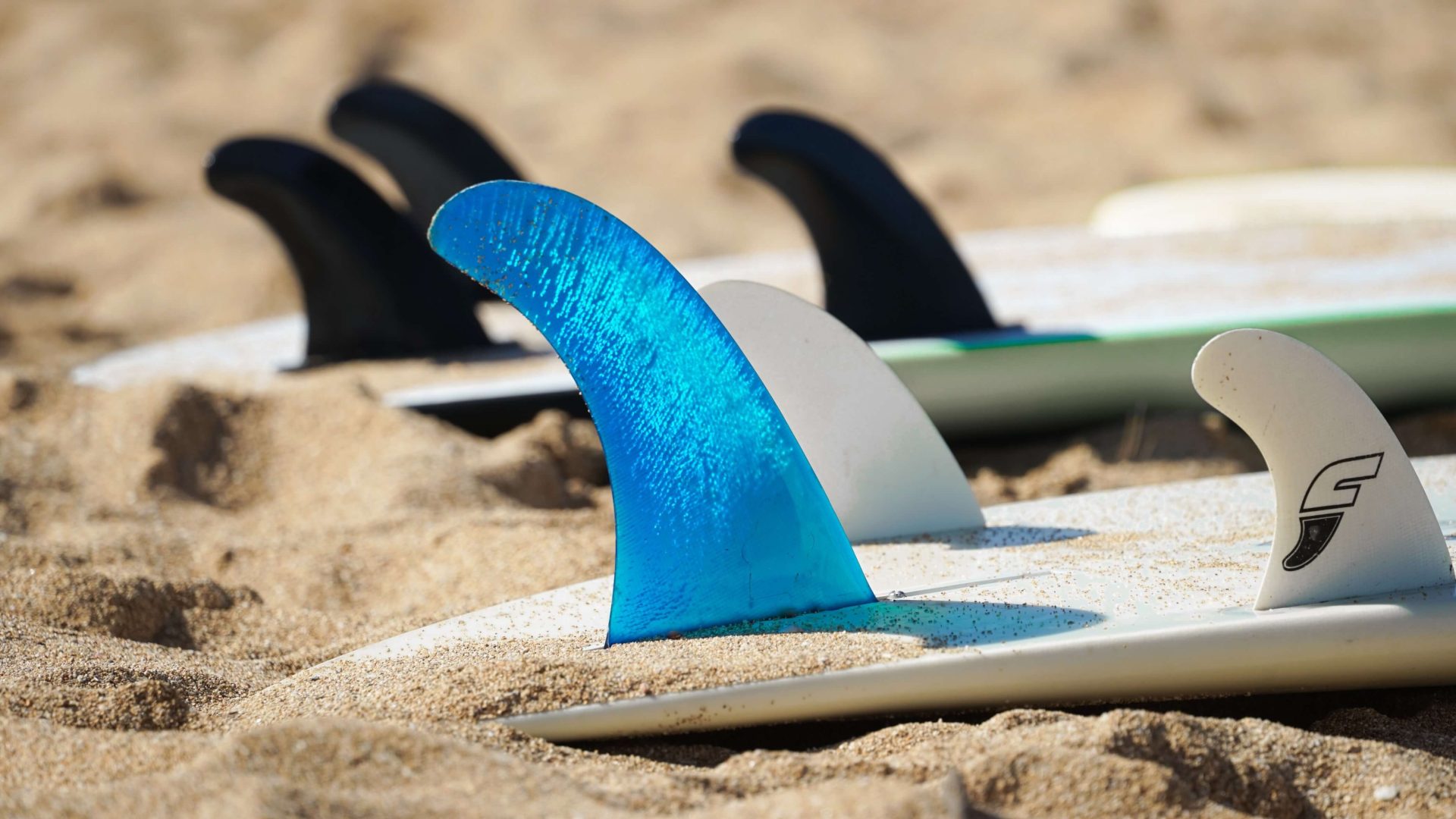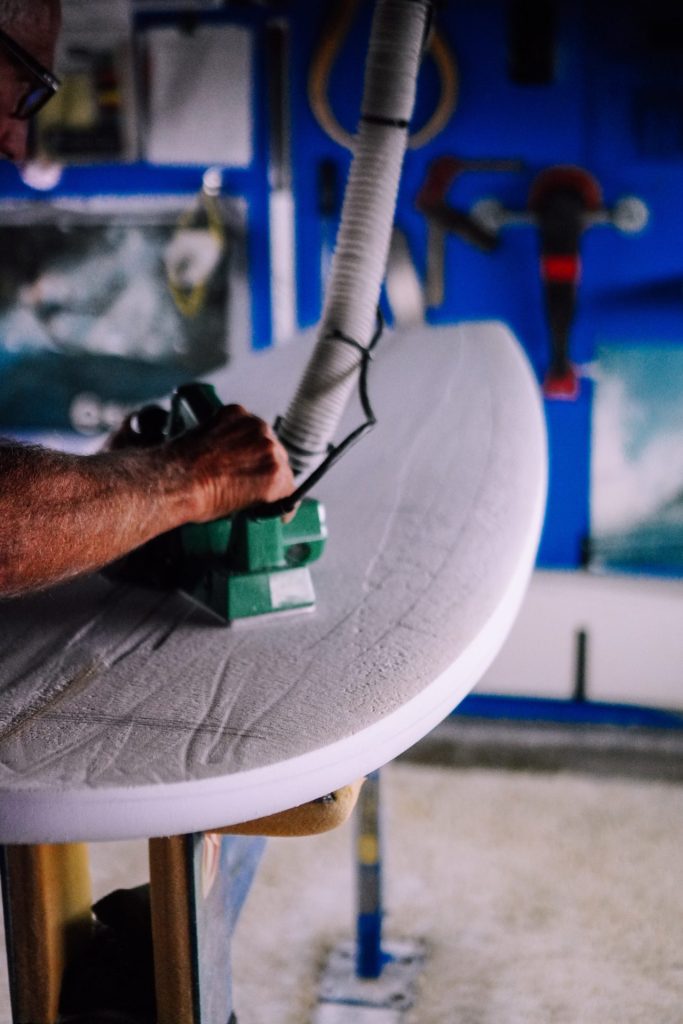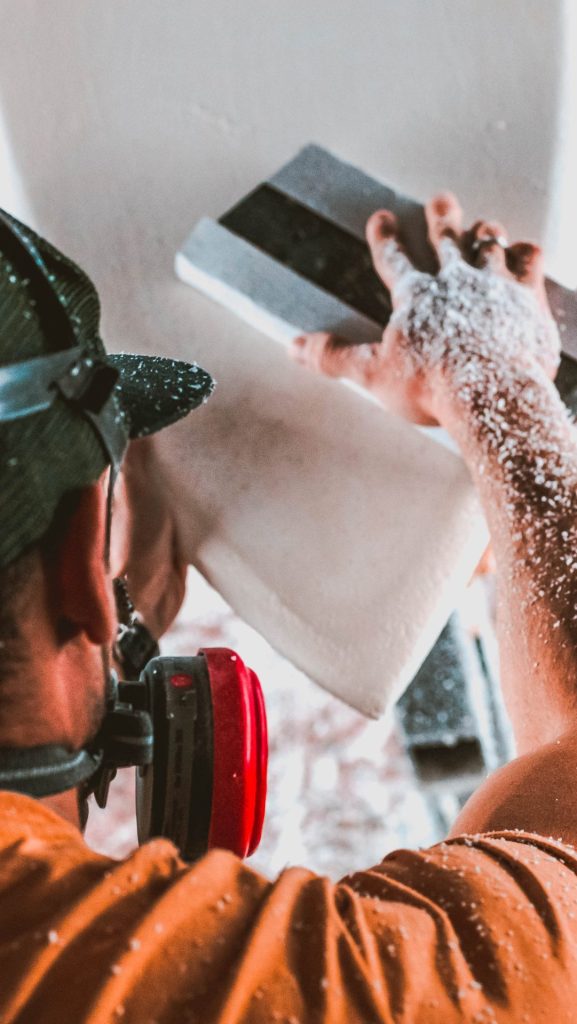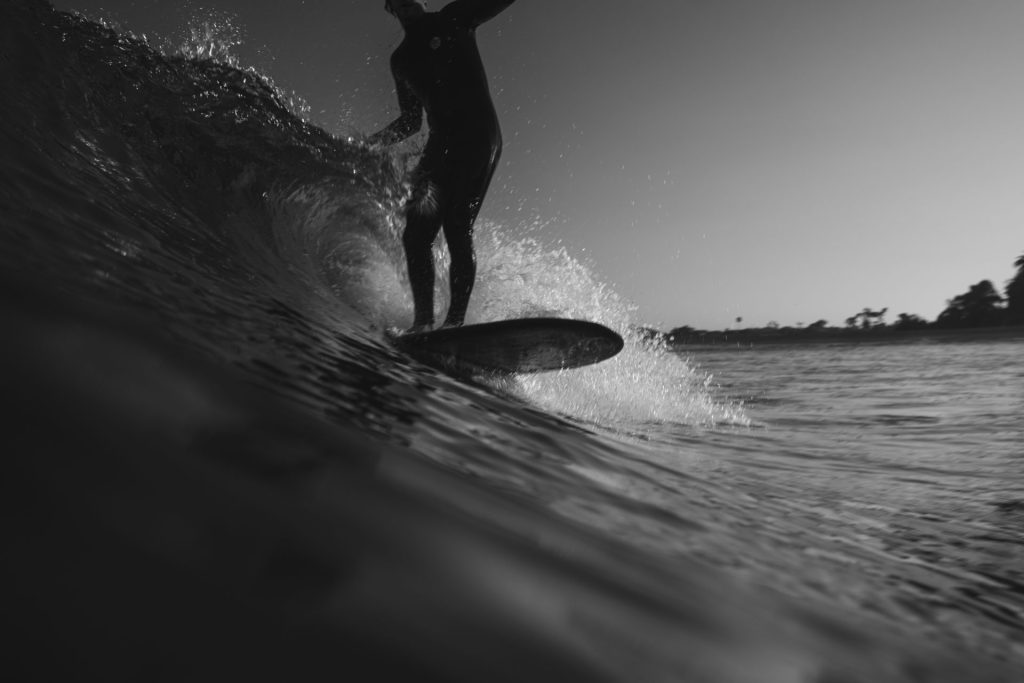What are Surfboards Made of?

Yes we know how to use it, but do we know what a surfboard is made of?
Different surfboard types can be made up of a variety of materials, however in this article we talk about the common ones used in 2024.
Let's get into what surfboards are made of!
What are Surfboards Made of?
Surfboards are typically made of foam and fibreglass, with a foam core that provides buoyancy and a fibreglass shell that adds durability and shape.
However, it's not as simple as that...
To make a surfboard you can actually surf you need a composite of foam, fibreglass cloth, and resin.
What Materials Are Surfboards Made of
Surfboards may seem simple at first glance, but they're crafted from various materials to ensure they ride the waves with finesse.
What Are Surfboards Made of: Core Components
- foam
- resin
- glass
- fibreglass
- fin caps
- leash caps
When it comes to surfboard construction, there are a few key ingredients that come together to create the boards we ride on.
First, we have resin a vital component that's essentially a liquid plastic. Notably, there are different types of resin used in surfboard construction, including polyester resin, epoxy resin, and vinylester resin.
Fibreglass, or more accurately fibreglass cloth plays a pivotal role in surfboard construction. This cloth consists of woven glass strands, serving a dual purpose. The combination of fibreglass and resin creates a sturdy outer shell that makes surfboards suitable for riding waves.
One common misconception often heard is the desire for "fibreglass resin" or the intention to "make a fibreglass surfboard." It's essential to clarify that there's no such thing as fibreglass resin.
Surfboards are better described as composite structures, where foam, fibreglass cloth, and resin meld together to form lightweight yet durable boards.
Let's dive into the specifics to understand the intricate nature of surfboard construction.
Surfboard Foam
The heart of a surfboard is its foam core. There are different types of foam materials used, each with its characteristics, catering to the unique needs of surfers.
The main types of surfboard foam are: Polyurethane (PU) Foam, Polystyrene (PS) Foam & Expanded Polystyrene (EPS) Foam.
Types Of Surfboard Foam
Polyurethane (PU) Foam
Polyurethane foam is the traditional choice for surfboard cores. It's known for its relatively low cost and ease of shaping, making it a popular option for board builders. PU foam boards have been the standard for many years.
Polystyrene (PS) Foam
Polystyrene foam is commonly used in beginner and soft-top surfboards. These boards are more affordable, lightweight, and provide a good balance between stability and performance.
Expanded Polystyrene (EPS) Foam
EPS foam has gained popularity for its buoyant and lightweight properties. It's a common choice for high-performance surfboards and provides an excellent balance of speed and manoeuvrability.
Surfboard Resin
Resin plays a crucial role in holding a surfboard together. There are different types of surfboard resin, each with its unique characteristics. The main types include Epoxy Resin, Polyester Resin & Vinylester Resin
Types Of Surfboard Resin
Epoxy Resin
Epoxy resin is known for its lightweight and durable properties. Epoxy boards are ideal for advanced surfers who seek a lightweight and responsive ride.
Polyester Resin
Polyester resin has been a long-standing choice for surfboards due to its affordability and ease of use. It's often used for traditional PU foam boards.
Vinylester Resin
Vinylester resin is a middle-ground option that combines some of the benefits of both epoxy and polyester resins. It's used in various board types to achieve specific performance attributes.
Glass Microspheres
Glass microspheres are small hollow glass beads mixed with the resin. They help reduce the weight of the board while maintaining strength. This is particularly important for lightweight performance boards.
Fibreglass
Fibreglass is applied to the foam core and saturated with resin. It provides the structural integrity and durability necessary to withstand the forces of the ocean.
Fins Caps
Fin caps are usually made from the same materials as the board and serve as an attachment point for fins. They need to be strong to ensure the fins stay securely attached.
Leash Cap
Leash caps are the part of the board where you attach your surfboard leash. They must be sturdy to withstand the tension from the leash during a surf session.
Wood Surfboards
Some surfboards incorporate wood into their construction. Wood provides a unique aesthetic and may be used in combination with foam or other materials. A lot of wooden boards never get ridden and are used as art in surf shops or restaurants alike.
In the next sections, we'll explore how these materials come together to create different surfboard types, their advantages, and what surfboard paint to use on specific materials.


What Are Different Surfboards Made of?
Surfboards come in various shapes, sizes, and materials, each designed to cater to the specific needs of surfers.
The choice of materials plays a significant role in a surfboard's performance and durability. In this section, we'll break down the materials commonly used in surfboard construction.
What Are The Best Surfboards Made Of: Performance Boards
High-performance surfboards, designed for advanced surfers, are typically crafted from top-quality materials to achieve maximum responsiveness and agility on the waves. These boards are often constructed using:
What Are Polyurethane (Poly) Surfboards Made of?
Polyurethane foam surfboards have been a staple in the surfing world for decades. Combined with polyester resin, they offer a classic feel and excellent manoeuvrability, making them a favourite choice among many surfers.
Epoxy Surfbaords
Epoxy surfboards have gained popularity for their lightweight and durable characteristics. They provide exceptional buoyancy and are ideal for surfers who seek a fast and responsive ride. Epoxy boards have become a top choice for high-performance enthusiasts.
Poly vs Epoxy Surfboards: Which One?
Comparing polyurethane (PU) and epoxy surfboards, surfers must consider factors like weight, performance, and durability to determine which one suits their style and skill level best.
| Characteristic | Poly Surfboards | Epoxy Surfboards |
|---|---|---|
| Weight | Heavier | Lighter |
| Durability | More prone to dings and damage | More durable |
| Flex | Less flexible | More flexible |
| Repairability | Easier to repair | Harder to repair |
| Performance | Better for big, powerful waves | Great for small to medium waves |
| Price Range | Typically more affordable | Often more expensive |
What Are Soft Top Surfboards Made Of?
Soft top surfboards are commonly made from foam materials, such as expanded polystyrene (EPS) or polyethylene (PE) foam. These materials are chosen for their stability, durability, and safety benefits.
Foam surfboards are versatile and suitable for various surfing conditions. They are often constructed with foam cores, making them lightweight and stable, ideal for beginners and fun rides.
What Are Surfboard Blanks Made Of
Surfboard blanks, which serve as the core of a surfboard, are typically crafted from polyurethane foam (PU) or expanded polystyrene foam (EPS). The choice depends on the type of board being constructed.
Wooden Surfboards
Wooden surfboards are known for their sustainable and aesthetic appeal. Some surfers choose these eco-friendly boards made from wood, often crafted into hollow designs.
Soft Top vs Hard Top: Material Differences
The primary difference between soft top and hard top surfboards is the material used. Soft tops use foam cores for added stability and safety, while hard tops are typically constructed from traditional materials like polyurethane foam.
What Are Inflatable Surfboards Made of?
Inflatable surfboards are gaining popularity for their portability and ease of use. These boards are typically made from high-quality drop-stitch material, ensuring longevity and durability when inflated.
Here a few more details into what certain surfboard features are made from:
What are surfboard fins made of?
Surfboard fins, crucial for stability and control, are crafted from various materials, including plastic, fibreglass, and even sustainable alternatives like recycled materials.
What are eco friendly surfboards made of?
Eco-friendly surfboards are designed to minimise environmental impact. They are often constructed using sustainable materials like recycled foam, bio-resins, or wood.
What are surfboard traction pads made of?
Surfboard traction pads are typically made from EVA foam, known for its grip and comfort underfoot.
What are surfboard leashes made of?
Surfboard leashes, essential for keeping surfers and boards connected, are constructed with durable materials like polyurethane cord and comfortable neoprene ankle straps.
Understanding the materials used in surfboard construction is crucial for selecting the right board that aligns with your skill level, preferences, and the type of waves you want to conquer. In the next sections, we'll explore different surfboard types and their construction materials, helping you make an informed choice for your next ride.
Originally What Were Surfboards Made of
Surfing has a rich history that dates back centuries. Over time, the materials used to craft surfboards have evolved. In this section, we'll delve into the origins of surfboards and the materials that were initially used.
Surfboard History Timeline
The history of surfboards is a fascinating journey that takes us through different cultures and centuries. From ancient wooden planks to the modern high-performance boards, surfboard construction has witnessed significant advancements over time.
For many years, surfboards have been made in a particular way known as PU/PE construction, a classic method dating back to the 1940's. In this process, surfboards are built using a core of polyurethane foam, and they're covered with layers of fibreglass cloth and a special kind of resin called polyester resin.
It's the way surfboards have looked and worked for a long time.
Around the 1980's, surfboards took a big leap in innovation. Some surfboard creators started using a different type of resin called epoxy resin. They tried combining epoxy with the traditional PU foam cores, but it didn't work out perfectly because epoxy technology was still quite new.
These boards ended up being a bit heavier and didn't look as cool as the classic PU/PE surfboards.
Some manufacturers even tried super light EPS foam cores with epoxy resins, and these boards got the name "Epoxy surfboards." Early versions were sometimes criticised for being too light and stiff, making them feel like you were surfing on a ping pong ball.
But here's the cool part, as the years went by things got better. They improved the EPS foam and epoxy resin, making these boards more awesome. Surfboard makers learned how to balance the flex (how much the board bends) and how it works in the water.
So today, when people say "Epoxy Surfboards," it doesn't mean pop-out boards anymore. Instead, it's a popular way to build surfboards that can perform just as well or even better than the classic PU/PE surfboards.
First Surfboards Made
The exact origin of the first surfboard remains a topic of debate among historians. However, early surfboards were typically handcrafted from wood and varied in size and shape based on the region and purpose.
Ancient Surfboards
Ancient surfboards were made from a variety of materials, depending on the culture and available resources. Some early surfboards were crafted from wood, while others used materials like reeds, palm fronds, and even animal hides.
Understanding the historical development of surfboards and their original materials provides insight into the evolution of this beloved water sport. As we explore surfboard types, it's important to appreciate the heritage and innovation that have shaped today's surfboards.
The Future Of Surfboards
As technology continues to advance, the future of surfboards promises exciting developments. Surfboard design and materials are evolving to provide surfers with new and innovative experiences. In this section, we'll explore some emerging surfboard technologies that are shaping the future of the sport.
Cornice Surfboard
Cornice surfboards are designed to push the boundaries of traditional surfboard design. These boards often feature unconventional shapes and materials, aiming to enhance performance and manoeuvrability.
Foil Surfboard
Foil surfboards, also known as hydrofoil surfboards, are a revolutionary addition to the surfing world. These boards incorporate a hydrofoil beneath the water, which provides lift and reduces drag, allowing surfers to ride above the water's surface for an entirely unique experience.
E-surfboard (Jetboard)
E-surfboards, or jetboards, bring the power of electric propulsion to surfing. With built-in motors and battery systems, these boards offer surfers the ability to catch waves with less effort and greater speed. E-surfboards are reshaping the future of the sport, making surfing more accessible and eco-friendly.
The future of surfboards is undoubtedly exciting, with innovations like cornice surfboards, foil surfboards, and E-surfboards opening up new possibilities for surfers of all levels. As surfboard technology continues to advance, surfers can look forward to a broader range of options for experiencing the thrill of the waves.

Summing It Up: What To Do Now
So, there you have it. You know what surfboards are made so next time you purchase a new board you can make a calculated decision on your surfboard material. But first, ensure you know what size surfboard you need!
If still unsure watch this short video explaining What Are Surfboards Made Of.
If your interested in learning more about surfing discover our many guides that will inform you on your surfing journey. Don't forget to follow us on Facebook & Instagram to stay informed on our amazing surf shots and stories shared from surf creators around the world!
Frequently Asked Questions
What specific materials are used in surfboards?
Surfboards are typically made from foam cores like polyurethane (PU) or expanded polystyrene (EPS), coated with various materials like fibreglass and epoxy.
Are surfboards made of polyester?
Some surfboards are made with polyester resin, commonly used for laminating fibreglass layers on the board's foam core.
Are epoxy surfboards better than fibreglass?
The choice between epoxy and fibreglass surfboards depends on your preferences. Epoxy boards are generally more durable, lighter, and buoyant, making them popular for beginners
What is the difference between EPS and PU?
EPS (expanded polystyrene) and PU (polyurethane) are different types of foam cores used in surfboard construction. PU is denser and has been the traditional choice, while EPS is lighter and more buoyant.
Are surfboards made of fibreglass?
Surfboards are commonly constructed using fibreglass cloth layered over a foam core, often laminated with polyester or epoxy resin.
How do I know if my surfboards made of fibreglass or epoxy?
To determine if your board is fibreglass or epoxy, you can examine its characteristics. Epoxy boards tend to be lighter and often have a different appearance, with a cleaner, more polished finish.


